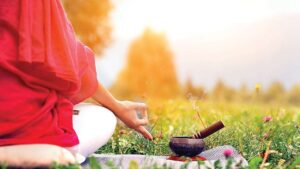Meditation And Yoga
Meditation And Yoga

Our meditation and yoga training programs are designed to empower you to excel and develop your spiritual environment to transform your life. While in Nepal we offer a variety of courses from beginner to advanced as well as retreats. We work in Kathmandu (temple city) and cooperate with other facilities in Nepal.
We offer 500 hours Advanced Yoga and Meditation Training in Nepal, Retreat Packages (Evening Retreat, Seven Night Eight Day Retreat, One Week Yoga and Meditation Detox Retreat, Two Week Retreat Month Yoga Retreat, Ayurveda, Naturopathy, Acupressure, Soul Healing, Reiki Healing, etc. Our training (500 hours) is certified by Nepal Yoga institute, we also offer other yoga certification courses like prenatal yoga training, yoga training for babies, 100 hour basic yoga training, 300 hour Nepal senior yoga training, etc.
Our yoga classes in Nepal are led by experienced and dedicated instructors with a high level of knowledge and vision to bring authentic Nepali yoga to the world. Meditation and yoga classes are open to anyone who wants to learn about our culture and practices with respect and enthusiasm.
Yoga and meditation are the best ways to heal the body, mind and soul. Our program in Nepal will teach and remind what are the most important considerations for a person to have a harmonious life, it will give him the correct art of living. In this yoga retreat, you will receive yogic and spiritual guidance to heal your inner being and restore your body. A regular practice of yoga and meditation promotes physical health, greater emotional peace, greater mental alertness, greater personal stability, and develops confidence in life. Your yoga training in Nepal will be a unique spiritual experience and your life may be different after completing our yoga and meditation training.
Advanced 500 Hour Yoga and Meditation Training Course.

The advanced yoga meditation course includes postures, science of breathing (pranayama), yoga philosophy, yoga detox, and yoga physiology and anatomy, in-depth understanding of lifestyle. It is a complete program that is an intense, challenging and rewarding life-transforming experience. After completing the training, you will be incredibly well prepared to teach yoga and meditation.
Whether you are looking to become a registered and qualified yoga teacher, or if you simply want to find yourself, our Advanced Training and Yoga Training program will provide you with the depth, knowledge and discipline necessary to lift you towards physical, mental and spiritual attunement. Our advanced training program is designed according to the international standards for yoga courses under the yoga alliance.
Training Group
We work with groups of 25 students, this allows us to maintain the quality of learning for this advanced yoga and meditation training.
The total investment for 500 hours of Advanced Yoga and Meditation Training is $2,000 (US dollars) in a shared room and $2,300 in a private room. Includes full training classes, accommodation, food, taxes and certification.
Yoga Style: We offer various styles of yoga in training. We will teach you traditional Hatha Yoga, Kundalini Yoga, Vinyasa Yoga, Astanga Yoga based on Patanjali (eight dimensions of yoga), Iyengar Yoga. Also, we provide information on Shivananda Yoga, Power Yoga, Yin Yoga, Restorative Yoga, etc. In our style of yoga, we teach with a holistic approach that integrates yoga asana (postures), Pranayama (breathing techniques), Dhyan (Meditation). ), Mantra Chanting, Yoga Detox, yoga philosophy, yoga anatomy, lifestyle that is the essence of all types of yoga.
Eligibility: Students of all levels, beginner to advanced, all styles and traditions of yoga can join this 500-hour registered yoga training course. Beginners have the opportunity to enter the new world of yoga, while regular practitioners will have the opportunity to further their yogic knowledge. You can directly join the 500 hour yoga teacher training course without the 200 hour course. Anyone who has a strong desire to rise to a new level of peace, harmony, health and fulfillment can take this course.

The certification we grant of yoga and meditation program that works with the Yoga Institute of Nepal. Upon completion of your training, you can register your certificate with the Institute to become a registered yoga instructor. Registration is voluntary.
Highlights of 500 hours Advanced Yoga Teacher Training
• Internationally recognized Advanced Yoga Teacher Training certificate is rewarded to the successful participants of 500 YTT course.
• Regular yoga, Meditation, and pranayama (breathing science) classes.
• Daily healthy yogic diet and Varieties of herbal tea, Nepali tea and juices etc.
• Comfortable and cozy accommodation.
• 500-hours Advanced Yoga Teacher Training course in a sober surrounding surrounded by the winsome beauty of the dense forest, shackles of high mountains, Snowy Himalaya views, and beautiful village landscapes.
•Advanced yoga and meditation techniques are taught by highly experienced yoga teachers.
•Effective Pranayama, Mudra and Banda techniques.
•Daily discourses on yoga philosophy including the essence of ancient scriptures on Patanjali Yoga Sutra, Bhagavad Gita, Veda etc.
•Energetic mantras chanting to feel the powerful vibration.
•Opportunity to get feedback from your teacher and get their kind supervision.
•24 hours Wi-Fi connection.
•Daily workshop.

Highlights of the 500 Hour Advanced Yoga and Meditation Training:
•Internationally recognized Certificate of Advanced Yoga Training awarded to those who successfully complete the 500 hour course.
•Regular yoga, meditation and pranayama (breathing science) classes. • Daily healthy yoga diet and various herbal teas, Nepalese teas and juices. • Comfortable and warm accommodation.
•500 hours of advanced yoga classes in a secluded environment surrounded by the fantastic nature of Nepal.
•Experienced yoga teachers teach advanced yoga and meditation techniques.
•Effective Pranayama, Mudra and Bandha.
•Daily lectures on yoga philosophy, including the essence of ancient scriptures such as Patanjali’s Yoga Sutras, Bhagavad-gita, Vedas, etc.
•I chant energetic mantras to feel powerful vibrations.
•Opportunity to receive feedback from the teacher and receive his/her faithful supervision.
•24 hour Wi-Fi.
•Daily seminars.
Professional benefits of Advanced Yoga Teacher Training course.
There are many professional benefits of 500 Hours Advanced of Meditation and Yoga Training Course. The students get the following advantages:
•Eligibility for registering with Yoga Alliance as a Registered Yoga Teacher (RYT) and get tips for commencing your own yoga center, finding new students, etc.
•The choice of self-employment as well as the flexibility of teaching both nationally and worldwide.
•Assuredness in teaching and imparting yoga as well as higher skills in yoga teaching increased confidence in using yoga tools for better alignment.
•Well preparation to tackle many of the aversive situations that might arise in the class
•Caliber to teach a large number of students
•Graduate from the YTTC that has disseminated many yoga teachers.
•Some extraordinary from the crowd- many people participate in the 200 Hours Yoga Teachers’ Training but the 500 hours certification shows your commitment to your students for better teaching.
•Once you complete advanced yoga training you will be able to develop your own peerless teaching style.

What will you learn and experience in this advanced yoga teacher training course?
• You will dive into the deep core of Hatha, Kundalini and Ashtanga practices and explore in detail the origins of their modern forms.
• Yoga Home Nepal’s 500-hour advanced yoga teacher training course includes a detailed explanation of yoga asanas, pranayama and their healing effects on the body and mind. In addition, you will learn about the benefits, risks, variations and modifications of yoga asanas.
• Nepal Yoga Home Kathmandu teaches a yoga lifestyle in sync with nature, health, happiness and harmony. In this way, you get rid of stress and prevent diseases. This course brings awareness, joy, spiritual growth and transformation into every moment of the course.
• Enjoy healthy and nutritious food at the foot of the mountain. We grow organic food in our gardens and provide our students with better health, which positively influences the practice of yoga and meditation.
• We conduct some yoga workshops and choose different topics according to the students’ interests. Workshops will focus on topics such as hip opening, handstands and handstands, backbends, arm balances, breath science, diet, traditional medicine systems and more. Workshops include practical adjustments, yoga program development and implementation, anatomy, meditation and more.
• Learn advanced detoxification asanas, meditation, pranayama, mudras, bandages and yoga techniques.
• Safe, clean, comfortable and undisturbed accommodation to support your yoga journey.
• Trained, experienced and award-winning yoga instructors teach innovative teaching methods.
• Philosophy will be studied based on ancient texts such as: Yoga Sutras of Patanjali, Vedas, Upanishads, Bhagavad Gita, etc.
• The anatomical elements of yoga, including the seven chakras (seven energy centers), the seven bodies, the five koshas (five bodies). ), three nadis (three different energy paths) and more.
• We teach effective soul meditation and other forms of meditation. We believe in the practical aspects of mediation, not just the philosophical aspects. Our meditations are easier to practice, simple, easy to use and sustainable to apply in your daily life.
• Heal yourself and others – Yoga has powerful healing powers and can help with stress, anxiety, depression and more.
• Learn about the science and causes of stress and how stress can lead to psychosomatic disorders. Learn how yoga can help you manage stress and manage your life.
• Learn yoga remedies for various ailments like back pain, sciatica, diabetes, high blood pressure, asthma, constipation, heart disease, yoga to make you look younger, healthy, headache, migraine and more.
• Small class sizes create a loving and caring learning environment. We offer one of the cheapest yoga teachers training in the world in the stunningly peaceful surroundings of Kathmandu.
• Concept of Ayurveda, natural home remedies and yoga herbs.
• The practice of mantras and their incredible power, meaning and uses.
• Extensive teaching practice that allows you to transfer this information to students.
• Best Yoga Teacher Training School in Kathmandu with experienced team of registered Yoga teachers with more than 15 years of teaching experience.
• Good Yoga Nidra practice to promote inner healing and self-transformation.
• Hands-on experience – guide, infer, adapt and inspire.
• Apply these concepts when helping your teacher in class: observe and help in class.
• Learn about the yoga industry, including running, marketing and promoting a yoga studio or private practice, and student retention.
• Improve your teaching skills and refresh your yoga style.
• Help answer life’s seemingly unanswerable questions.
• Share your previously acquired knowledge with your friends
• Give yourself time to read the universe and think about the importance of nature in our yoga training
• Become a qualified yoga teacher for Yoga Alliance International’s 500 hour program
• Enjoy Nepali culture, Nepali fashion, Nepali food and Nepali language.
• Be a part of a globally recognized standard symbol of knowledge in yoga.
• Our advanced yoga teacher training courses are internationally recognized and registered with the Yoga Alliance.
•Our head teacher, Acharya Prakash, is an ambassador for the International Yoga Federation of Nepal. An opportunity to learn directly from him. Learn how to integrate asana, pranayama, meditation and other yoga principles into real life.
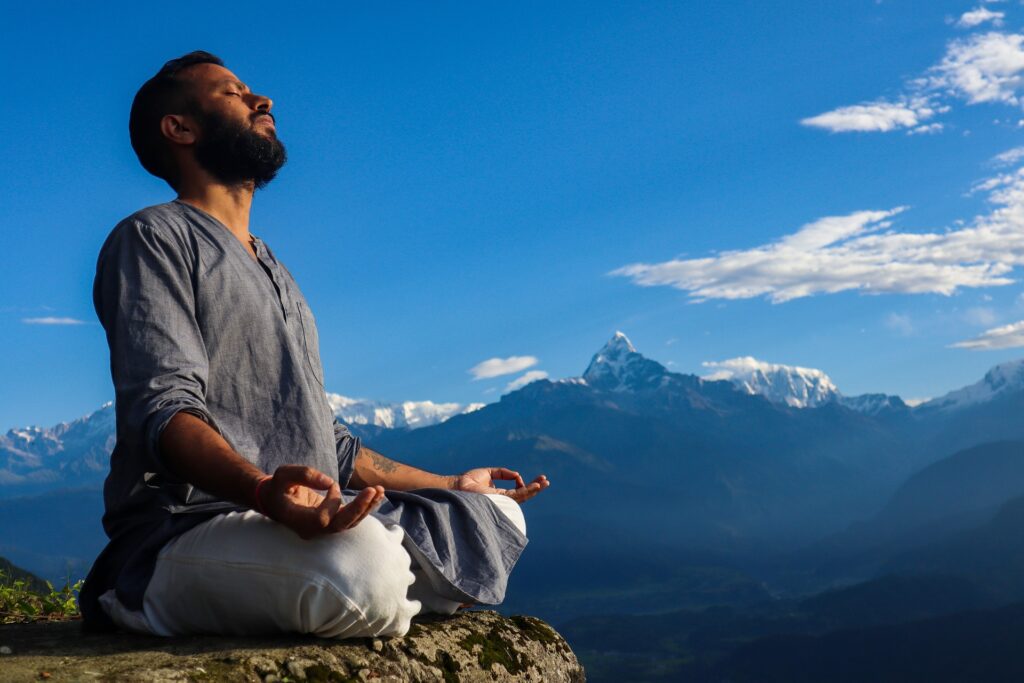
- A curriculum for advanced yoga teacher training.
Our advanced yoga teacher training course is based on the Yoga Alliance 500 hour advanced yoga teacher training standard. It is formulated and designed by our experienced teaching staff. Our courses will give you the information you need to deepen and enrich your yoga practice and teach students with confidence. Our courses include the following:
• Yoga asanas (poses)
• Pranayama mudras and bandhas (science of breathing)
•Meditation: Theory and Practice
•Yoga philosophy
•Chanting of Mantras and Kirtan
•Ayurveda and diet/yoga lifestyle
•Yoga Detox
•Therapeutic yoga for various diseases
•Teaching practices and teaching methods
•Anatomy and physiology - 1. Yoga asanas (postures).
This course is about the 108 most effective and advanced asana practice techniques and adjustments. You will practice traditional, research-based, modern and advanced variations and precise adjustments to gain a deeper understanding of yoga asanas. You will learn the following set of yoga asanas:
• Yoga warm-up group. - Micro Yoga Asana Set.
• Sun salutation.
• Worship the moon.
• Balance bag set.
• Diamond Pack Group.
•A set of Padmasana poses.
• A set of hand stands.
• Forward bending group.
• Backbend pose group
• Twist bag set.
• Set of flexible bags.
• Strengthen opinion groups.
•A set of yoga asana sequences.
• Permanent mission.
• Seating group.
• A lot of lies.
• Leisure bag group.
• A set of meditation poses.
• Arm Balance Bag Set
• Bend into a yoga pose.
• Open chest yoga pose.
•The most important yoga poses.
• Hip open yoga pose.
• Restorative yoga poses.
Therapeutic yoga can lead to various problems and more. A set of advanced yoga poses.
2. Pranayama, mudras and bandhas (the science of breathing).
Breath (prana) is the basis of life. It is the source of life energy. Pranayama or breathing exercises can promote the art of proper breathing. Proper breathing is about providing more oxygen to the blood and brain and controlling life energy (prana). Pranayama is the key to deep meditation. The breath is the gateway to you. Students develop their pranayama practice better by flushing the entire body with prana (breath) energy. Students gain the ability to creatively teach pranayama. Here students learn to teach advanced pranayama and energy healing techniques, bandages and mudras.
Knowledge of mudras and bandhas helps to understand pranayama in more detail. The Sanskrit word (mudra) means seal or lock. It indicates the closing position of the body, the fingers are held together with special movements. Mudras require a combination of breathing and specific body and finger positions to activate various energy centers and careful passages in the body.
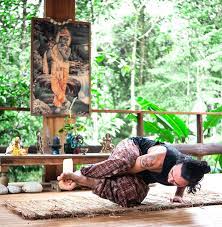
“Bandha” in Sanskrit means to hold or block. It also denotes the position occupied, supported and controlled by certain organs or parts of the body. During bandaging exercises, the flow of energy to certain areas of the body is interrupted. This allows the energy to flow more decisively when the Bandha is released, thus recapturing the entourage of the energy point. The main learning objectives of respiratory science are:
• Introduction to Pranayama,
• Benefits of yogic breathing (pranayama).
• Practice over 25 advanced pranayama techniques.
• Correct use of bandhas (blocking the breath)
• Correct use of mudras (breath impressions).
• The Glory of Pranayama in Hatha and Ashtanga Yoga
• Types of Pranayama according to Patanjali
• Development of Pranayama
• Anatomy and physiology of respiration
• Pranayama teaching method
• How to help students correct various breathing abnormalities.
• Meditation: Theory and Practice.
1. Yoga asanas (postures)
This course is about the 108 most effective and advanced asana practice techniques and adjustments. You will practice traditional, research-based, modern and advanced variations and precise adjustments to gain a deeper understanding of yoga asanas. You will learn the following set of yoga asanas: Micro Yoga Asana Set.
• Yoga warm-up group.
• sun salutation.
• worship the moon.
• Balance bag set.
• Diamond Pack Group.
• A set of Padmasana poses
• a set of hand stands.
• Forward bending group.
• Backbend pose group.
• Twist bag set.
• Set of flexible bags.
• Strengthen opinion groups.
• A set of yoga asana sequences.
• Permanent mission.
• seating group.
• a lot of lies.
• Leisure bag group.
• A set of meditation poses.
• Arm Balance Bag Set.
• Bend into a yoga pose.
• open chest yoga pose.
• the most important yoga poses.
• hip open yoga pose.
• Restorative yoga poses.
Therapeutic yoga can lead to various problems and more. A set of advanced yoga poses.
2. Pranayama, mudras and bandhas (the science of breathing).
Breath (prana) is the basis of life. It is the source of life energy. Pranayama or breathing exercises can promote the art of proper breathing. Proper breathing is about providing more oxygen to the blood and brain and controlling life energy (prana). Pranayama is the key to deep meditation. The breath is the gateway to you. Students develop their pranayama practice better by flushing the entire body with prana (breath) energy. Students gain the ability to creatively teach pranayama. Here students learn to teach advanced pranayama and energy healing techniques, bandages and mudras.
• Breath meditation
• Silence meditation
• Mantra meditation
• So- Ham meditation
• Buddha style of meditation
• Walking meditation
• Vipassana meditation
• Ana-Pana meditation
• Mindfulness meditation
• Chakra meditation
• Kundalini meditation
• Dynamic meditation
• Soul meditation
• Jyoti Meditation
• Sthul meditation
After learning these techniques, you understand how they can be incorporated into a modern practice and teach to your student.
3. Yoga Philosophy.
Yoga philosophy has a significant role in yoga teachers’ training. In yoga philosophy, we will teach practical philosophy based on authentic scripture of yoga like Patanjali yoga sutra, Bhagavad Gita, Veda, and Upanishads etc. The following topics will be covered in the yoga philosophy curriculum:
Meaning of yoga, concepts and history
• The different path of yoga-(Hatha yoga, Astanga yoga, Raja yoga, Bhakti yoga, Karma yoga, Kundalini Yoga, Nada Yoga, Gyana Yoga, Tantra Yoga, mantra yoga, Kriya yoga).
•Special study of Astanga Yoga & Hatha Yoga.
•The chakra systems, its qualities, activating and balancing techniques.
•Energy or Nadi System.
•Five types of bodies (Koshas).
•Kundalini energy and its function and power.
•A relation between Guru and disciple.
•The mind, its mystery, and control.
Bhagavad Gita– The Bhagavad Gita consists of 18 types of yoga in each chapter. The beginning six chapters have been categorized as the karma yoga (yoga of selfless action) segment since they fundamentally talk on the science of the individual consciousness realizing communion with the final consciousness through owns duty done for good of others. The middle six chapters have been characterized as the Bhakti Yoga (The path of devotion to the ultimate source). The final six chapters are considered as the Gyan Yoga (Path of realization through knowledge). Following topics will be covered in Bhagawat Geeta:
•Study and its application to life.
•Karma Yoga (Path of selfless action).
•Bhakti Yoga (The path of devotion).
•Gyana Yoga (Path of knowledge).
•The eternal reality of the soul’s immortality.
•The eternal duties of human beings.
•The science of self-realization.
•The individual consciousness and ultimate consciousness.
•The three divisions of material existence.
Yoga Sutras of Patanjali– There is the most important knowledge on the path of yoga. Patanjali is the pillar and milestone in the Yoga tradition. Patanjali formed the Ashtanga (eight-limbs) Yoga around 2500 years ago. Yoga sautras is divided into 4 chapters: Samadhipada, Sadhanapada, Vibhutipada, Kaivalayapada. Patanjali Yoga Sutra covers the following topics-
•The concept of yoga according to yoga sutra.
•Five kinds of vritti (movement of mind stuff).
•Four kings of Chitta ( State of mind).
•Hindrances on yoga practice.
•The concept of God and guru on yoga sutra.
•Pancha klesha (five impurities of a human being).
•The way to achieve mastery over Chitta vritti (fluctuation of mind).

4. Veda and Upanishads
The word ‘Veda’ means Wisdom or Knowledge. The Vedas are the oldest written text on our planet. They date back to the beginning of human civilization and are the earliest literary records of the whole human race. The Vedas are divided into four groups, Rigveda, Yajurveda, Samaveda, and Atharvaveda. Each group has an original text (Mantra) and a commentary portion. The portions interpret the philosophy of the original texts to constitute the Upanishads. Listening to the Vedic chanting and practicing mantra calm the mind. In fact, chanting is considered to be one of the vital forms of meditation. Vedic chants help in relieving stress and promoting efficiency. We teach the following from the Veda and Upanishad –
• The concept of the application of Vedic knowledge for health and healing.
• Study of Vedantic meditation techniques
• Explanation of Vedantic mantras
• Some important way of yoga from Veda and Upanishads
5. Mantra chanting & Kirtan.
Mantras are methods of using sound vibrations to influence consciousness and reap the benefits of inner peace. Chanting mantras is an effective way to integrate body, voice, mind and emotions. Some of the vibrations produced during chanting can improve physical and mental health. The teaching method is traditional where students are taught orally. Singing with good direction has many benefits. The practice of chanting mantras creates certain vibrations in different parts of the body. Therefore, if used properly, it can improve physical and mental health. These sacred mantras open the spiritual path for us. Students will learn the following:
• Chanting of different mantras which are universally relevant and accepted.
• The basic rules of chanting, with an explanation of the meanings of these chants
• Correct rhyme and spelling of the mantras
• Kirtan chanting in the group
•Positive effects on the emotions
•Correct pronunciation and mental attitude
• Mantra for the Modern Yogi
• Mantra meditations
• Mantra yoga
6. Ayurveda & diet/ Yogic lifestyle.
We provide you with the basics of Ayurveda (a traditional medical system) that promotes a healthy lifestyle, the use of Ayurveda according to doshas and diagnosis and treatment, as well as general uses of Ayurveda. Yoga practice needs to be complemented with the right foods to get the most out of what yoga has to offer. So we learn what to eat, how to eat, how to balance food, how to cook and what foods are good for maintaining a healthy life. Our teachers will guide you on the following topics.
• Basic knowledge of Ayurveda.
• Importance of attitude and yogic life.
•Subtle aspects of the vegetarian diet.
• Health tips.
• Self-discipline.
• Social discipline.
• Mitahara or balance diet.
7. Yoga detoxification.
The Yoga Detox class explores the cleansing techniques of yoga and their practical application. In Yoga Detox we will teach the theoretical and practical aspects of Sat-Karma (six yogic cleansings) and fasting to detoxify the body. Sat karma (sometimes called Sat kriya) consists of two components: “sat” means “six” and “karma” means “process”. The word “kriya” or “karma” is used in yoga in a special technical sense for purification techniques. The six main cleansing processes are Neti, Dhauti, Nauli, Basti, Kapalbhati and Tratak.
• Neti: nasal cleansing, including jala neti and sutra neti.
• Dhauti: the cleansing of the digestive tract including shankhaprakshalana
• Nauli: abdominal massage.
• Basti: colon cleaning.
• Kapalbhati: purification and vitalization of the frontal lobes.
• Trataka: blankness or light gazing.
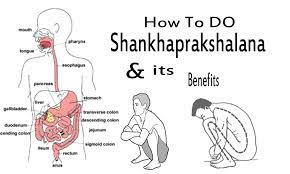
8. Shankhaprakshalana (intestinal cleansing)
Shankha prakshalana (nogle gange kaldet laghu shankha prakshalana) ir en yogisk kriya til rensning af tarmene. Ordet Shankhaprakshalana kommer fra to ord. Shankha means “concha” and prakshalana means thorough purification. The word shankha prakshalana is used to cleanse the entire digestive tract from the mouth to the anus. You will learn how to do this cleanse properly, including drinking warm salt water and choosing cleansing asanas. We will focus on perfecting the following five asanas, namely Tadasana, Tiryaka Tadasana, Kati Chakrasana, Tiryaka Bhujangasana and Udarakarshanasana.
9. Workshops.
Every day we choose a different topic for the workshop. Workshops will focus on topics such as hip opening, handstands, backbends, arm balances, breath science, diet, traditional medicine systems and more. And do it every day to help you understand and practice it safely and effectively. Workshops include: practical adjustment, design and implementation of yoga classes, anatomy, meditation, etc.
10. Therapeutic yoga for different diseases
Therapeutic yoga is the application of yoga postures, pranayama, meditation and yoga detoxification processes in the treatment of various diseases. It involves the practice and teaching of yoga to prevent, reduce or relieve structural, physical, emotional and mental pain, suffering or limitations. Yoga can help relieve stress, anxiety, depression, chronic pain, sleep disorders and improve overall well-being and quality of life. Yoga is considered a form of mind-body medicine that integrates the physical, mental and spiritual components of a person to improve health. In this advanced yoga teacher training, you will learn yoga as a great way to treat various ailments. It covers the basics of therapeutic yoga. Our students will learn the benefits of each pose and how to do a one-on-one therapeutic yoga class. We teach a variety of problems from simple to complex. We teach the following yoga for healing, but it may inspire ideas for other cases and ailments: Yoga for back pain, Yoga for stress and anxiety, Yoga for depression, Yoga for hypertension, Yoga for constipation, Yoga for heart disease, Yoga for diabetes, Yoga for pregnant women , looking for younger yoga, yoga for active health, yoga for headaches and migraines, yoga for arthritis, yoga for asthma, yoga for sleep disorders and more.
11. Teaching Practice and teaching methodology
Yoga Home Nepal manages the classes and classes can be taught at Yoga Home Nepal or other yoga facilities. Teaching practice will increase students’ confidence. Our practicum includes practicing teaching, receiving feedback, observing others, listening and giving feedback, and helping students while others teach. Daily chanting, meditation and pranayama provide mental structure and learning methods. Our teaching approach involves equipping students with the following diverse skills:
• Principles of demonstration.
• Observing, assisting and correcting.
• Instruction, teaching styles, qualities of a teacher.
• Planning and structuring a class
• Alignment and hands-on-adjustment.
• Dealing with injuries and safety precautions.
• Business aspects of teaching yoga.
• How to teach the big groups.
• How to manage classes for different level students at the same time.
• Learning how to structure a class.
• How to sequence a class.
• How to customize a class.
•Advanced modifications techniques.
• How to teach meditation.
12. Anatomy & philosophy.
In 500 Hours Advanced Yoga Teachers’ Training in Kathmandu, you learn practical anatomy and physiology. You understand how to apply anatomy and physiology in yoga classes which will improve your own practice as well your teaching and correction skills. Besides, you can be more confident in your knowledge of anatomy and gain more insight into the injuries and special conditions that your students may be dealing with. We will focus on practical applications of anatomy in postures, pranayama and meditation. This includes both human anatomy and physiology (bodily systems, organs) to incorporate into yoga practice. Our yoga anatomy and physiology courses will cover:
Various risk factors associated with asana practice, in both simple and more complex postures, as well as strategies that can help prevent injury
• Breathing and respiratory system
• Meditation and mind relation
• Yogic energy channels (Ida, Pingala, and Sushumna)
• The relation between yogic energy system (Chakras) and endocrine gland system.
• Study of the nervous system, brain, endocrine glands and how they relate to the practice of asanas, pranayama, and meditation
• Skeletal structure in well understanding
• Muscular system, connective tissue, the major joint of a body
• Information on the musculoskeletal system
• Basic Anatomy of classical Hatha Yoga asanas
• Physiology of main yoga asanas
• Physiology of breathing
• Physiology of stretching
• Common yoga injuries and more
• A daily schedule of advanced yoga teacher training.
Each day includes yoga and meditation classes in progressing level (basic to higher). Daily yoga classes, guided meditation, pranayama, philosophy & yogic discussion by nationally renowned teachers (Guru) provide you life transforming experience. Here is a sample schedule may change according to subjects, topics, teacher, climate and other situations
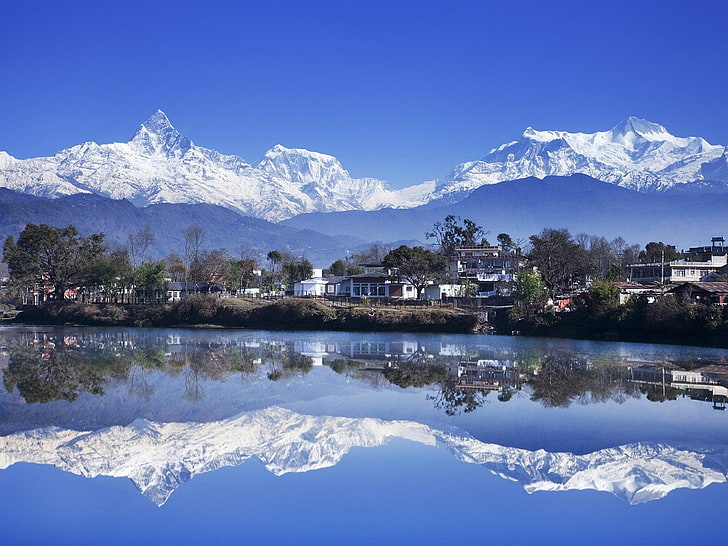
7.00 – 8:30 am – Yoga Asanas (Yoga Posture)
8.30 – 9.30 am – Breakfast
9.30 – 10.30 am – Meditation, relaxation and breathing
10.30 – 12.00 pm – Sight-seeing, hiking / Karma yoga etc
12.00 – 1.00 pm – Yogic Relaxation and mantra chanting
1.00 – 2.00 pm – Advance Level Yoga Practice
2.00 – 3.00 pm – Lunch
3.30 – 5.00pm – Textbook of yoga
5.00 – 6.00 pm – Tea break
6.00 – 7.00 pm – Yoga philosophy/chanting
7.00 – 8.00 pm – Dinner
8.00 – 8:30 pm – Celebration/ question answer/ campfire etc.
Note: Classes are held 6 days a week and 7th day is for optional trips to cultural and spiritual places. One hour selfless service (karma yoga) to the yoga home community is optional.
What to bring?
Casual comfortable clothes, slipper or sandals, rainwear (only in rainy season), flashlight, insect repellent (only in summer), alarm clock, water bottle, sunscreen…etc.
500 Hours Advanced Meditation & Yoga Training Course Dates.
The dates of these Yoga Training courses are consulted by direct message given the high influx, so we can guarantee your attendance.
Application process: Submit an application form which is available in booking menu or E-mail directly at meditationastro1@gmail.com
Advanced Payments
The balance payment can be paid through a bank transfer or western union money transfer for registration. The remainder of the money can be paid on arrival by credit card or cash in any currency. If you are coming with your debit/Credit card, you can get Nepali Rupees in cash from the local ATMs. Check with your bank for the transaction charges with credit and debit cards. The bank transfer charge should be covered by the student.
Non-refundable $500 USD deposit required to register.
Full payment due the first day of course.
Cancellation & Refund
The case of booking cancellation – If you wish to cancel the course, 25 % of the total amount will be deducted and the remaining amount will be refunded within 15 days of your notification. Once you start the course, fees are non-refundable at any circumstances. However, the student can reschedule for the next available date of Advanced Yoga Teachers’ Training under the agreement of Nepal Yoga Home and student.
Accommodation & Meal
Nepal Yoga Home- Kathmandu provides accommodation with comfortable rooms for spiritual studies. The double room will be shared by two people. If you need a private or deluxe room, note that the cost will be more than your package price. You will enjoy beautiful gardens, nice views of Himalayas, mountains, village and Kathmandu city from Nepal Yoga Home. We have 24-hours hot water, Wi-Fi service. The students participating in Advanced Yoga Teacher Training in Nepal Yoga Home will serve pure vegetarian/ vegan healthy and yogic food 3 times a day, 3 cups of tea and fruits.
Included in price.
– Yoga books defined in our syllabus
– Yoga classes
– Three times vegetarian meal (Typically contains Nepali Food, vegetables and fruits), If you feel you need extra supplementary you can buy yourself from near place.
– Few cups of tea
Tax
– Accommodation
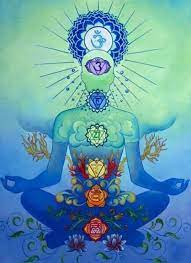
MEDITATION TRAINING
